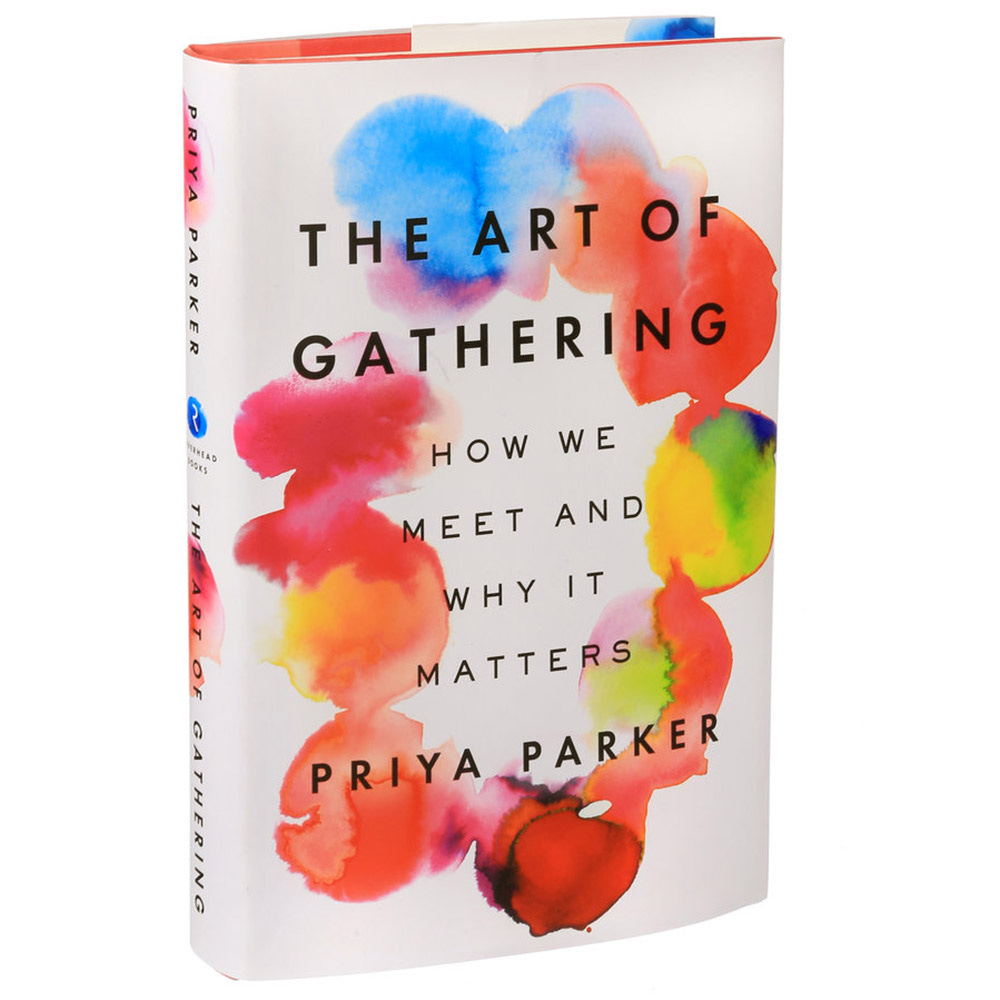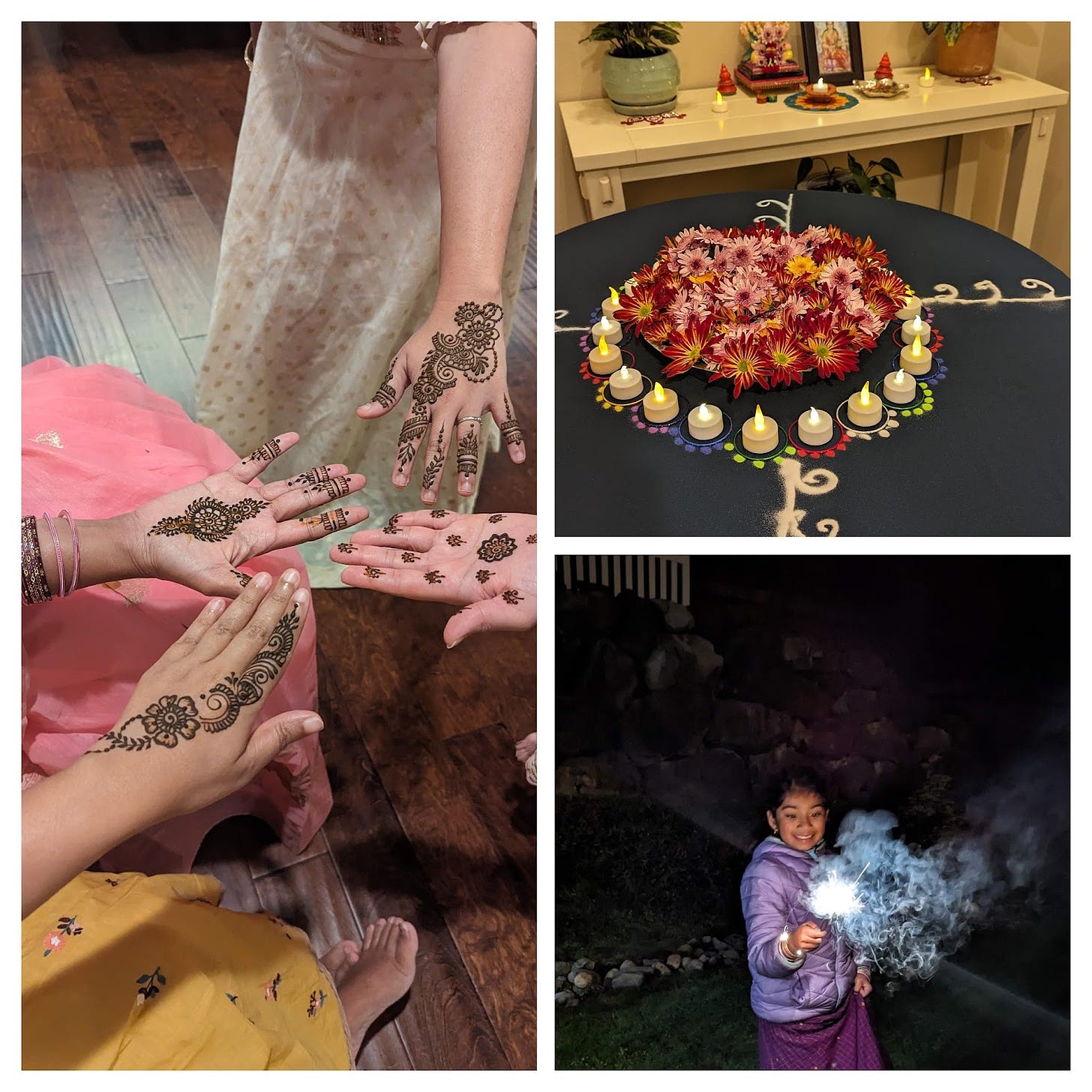Q4 is usually the annual planning season in most companies. Summits are a common gathering to bring people together and collect ideas for the next year. Q4 is usually the time for more gatherings like onsite team bonding events, all-team meetings, and holiday parties. In personal life, the fall and winter seasons bring some gatherings too. They include Halloween, Diwali, Thanksgiving, and the winter holidays!
A few years ago I read Priya Parker’s book, The Art of Gathering. It had great lessons on making any gathering, personal or professional, memorable and meaningful. In this post, I’m sharing them with you along with anecdotes from my own experiences.
Some parts of the article are direct quotes from the book, all the credit goes to Priya Parker.
Specificity is a Crucial Ingredient
The more focused and particular a gathering is, the more narrowly it frames itself and the more passion it arouses.
We all define the purpose of a gathering but most of us define it superficially without depth. Framing the purpose for a gathering as narrowly as possible will help you make it meaningful.
For example, here is a before and after definition for my family’s annual Diwali party.
Before: “The annual Diwali party we host for friends and family.”
After: "Our annual Diwali party where most adults are first-gen Indian immigrants. They want to introduce their Indian-American kids to the Diwali of their childhood in India."
Once we redefined our gathering this way, we were able to collect experiences from our guests to create a better gathering experience for everyone.
One way to find specificity in your event is to apply the Japanese principle of ichi-go ichi-e.
Each gathering is “ichi-go ichi-e” - one meeting, one moment in your life that will never happen again.
This principle is easy to apply to gatherings like milestone birthdays. But as Priya points out in the book, one can also apply this to recurring events. Perhaps this year’s annual team meeting is special because you have new leadership or it is the beginning of a year of growth in your business. Or perhaps this quarterly all-team meeting is special because your team completed a multi-year project. As the host and gatherer, it is up to you to find the specificity to make the gathering meaningful.
The Kindness of Exclusion
Sometimes we over-include because we feel a need to repay an old debt of hosting.
When designing a gathering, defining who is invited is important. Defining who is not invited is even more important. Inclusion is a wonderful thing but it loses its meaning if everyone is included. If everyone is invited, no one is!
I have two very different professional memories. They both support the need to be deliberate with your invites. My first memory is of being invited to a very large onsite. An eng leader, trying to be inclusive, invited ALL partner teams. There were 3 times more people than needed for the event. So, no difficult topics were discussed or hard decisions reached.
My second memory is of a steering committee (steerco) where I was not included. But, the organizer and lead reached out to me. They explained why I wasn't included and who was. This helped me understand the purpose of the steerco and who to contact if I needed something from them. In the months that followed, this steerco unblocked the project several times by making quick, clear decisions. The steerco lead’s kindness of exclusion led to excellent organizational efficiency!
Priya offers three excellent questions that can help you frame your gathering’s identity. The third question is one she particularly calls out as difficult but necessary. This was also what distinguished my two experiences above.
Who not only fits but also helps fulfill the gathering’s purpose?
Who threatens the purpose?
Who, despite being irrelevant to the purpose, do you feel obliged to invite?
The Château Principle
The Château Principle, in its narrowest form, is this: Don’t host your meeting in a château if you don’t want to remind the French of their greatness and of the fact that they don’t need you after all.
Choosing a venue wisely and using it to your advantage when planning a gathering is key to its success! The venue provides a backdrop for the gathering’s identity and for the feelings you want to evoke.
Recently I planned my husband’s milestone birthday celebration. We live in the Pacific Northwest. So, an all-weather venue was a must to avoid the weather spoiling the celebration. But I also saw this as an opportunity to integrate the gathering’s meaning into the venue. I wanted a gathering that reflected my husband’s extroverted personality and warmth. I also wanted a lively, noisy celebration with friends and family. Everyone, regardless of age, should be an active participant. With those new criteria, it was easy to choose Whirlyball for this gathering!
At work, when I had to do an all-team meeting with a group I had inherited, I opted for a smaller room than was customary for such gatherings. I also asked for the chairs to be arranged in a semi-circle instead of the usual theater-style. This coupled with some conversation-sparking content, turned the gathering into a meaningful discussion on the group’s concerns and path forward!
Generous Authority
A gathering run on generous authority is run with a strong, confident hand, but it is run selflessly, for the sake of others. Generous authority is imposing in a way that serves your guests.
Priya advocates for hosts to define rules in gatherings and follow them. She asks hosts to protect their guests from each other or from boredom. She calls on hosts to step into their roles as the owners and rulers of their gatherings.
If these statements sound authoritarian, I assure you that the book's chapters will show that Priya doesn't intend any malice. Here is an anecdote from the book. It will illustrate her view behind this call for Generous Authority as a host.
Richard Saul Wurman, the founder of the TED conference, [walked] onstage in Monterey, California, holding a pair of scissors. He walked toward Nicholas Negroponte, the founder of the MIT Media Lab, a speaker, friend, and longtime attendee who, despite his familiarity with its norms, had violated its policy forbidding neckties by wearing one that day. Generous authority, in service of the larger gathering and its values, compelled Wurman to approach Negroponte before he could start his talk and theatrically cut off much of his tie. Which he did.
Here is how I upheld Generous Authority at a work gathering I was facilitating. We started the day with a getting-to-know-each-other activity called Gifts and Hooks. Each person had a scented marker in a color of their choice and a large sheet of paper. Everyone had 10 mins to draw at least 2 pictures on their paper. One picture of Gifts they brought to the team’s metaphorical table. These were their skills, knowledge, characteristics, or capabilities. The other picture of Hooks they needed to stay fully engaged and actively involved. I had also given the group another rule - NO text; pictures only!
Besides the main goal of sharing more about themselves, I had another purpose for this activity. I wanted to encourage the group to be vulnerable with each other. I believed this would boost the team’s psychological safety. Most of us were far from budding artists in the room. Several had complained about not being able to draw a straight line when I first laid out the activity. But, showing weaknesses, like poor drawing skills, was the vulnerability this group needed to practice!
As I walked around the room during the drawings, I had to take away some sheets. The creators had chosen to write text, anyway. After some annoyed guests and many doodles, we switched to sharing. Everyone had oodles of fun guessing each other’s Gifts and Hooks from the cave-people drawings! I was heartened to hear, a couple of years later, that they made this activity a team tradition for every newcomer. This included enforcing the no text rule. Their psychological safety and thus their team effectiveness remains high to this day!
Cause Good Controversy
Many gatherings are designed for harmony not controversy. Priya makes a strong case for a bit of controversy. Used in the right dose, controversy can be the spice your gathering needs to be memorable.
Controversy can be mild. It can be like the red-team, yellow-team competition spirit my Whirlyball gathering stirred in our guests. Or, you can spice it up like I did in a recent work gathering. I picked controversial breakout session topics to encourage a real dialogue. You can bring even more heat by appointing a "devil's advocate" in key meetings. It will ensure that we consider all perspectives.
Priya also talks about the importance of Priming. Getting your guests in the right mindset is important especially if you plan to cause good controversy. You can do this by thoughtfully wording your invites, sending “pre-work activities” (something I use often at work!) and/or selecting your venue with an eye towards fostering good controversy.
The Exit Line
I'll end this post just as Priya ends her book. She reminds us that how you close the gathering and what you do afterward are often as important as the gathering itself. So don’t neglect that part of your preparation!
Thanks as usual for reading through this article! If you enjoyed it and want more, please subscribe to ChaiTime!
I’d also love to hear your thoughts on gatherings you have hosted or attended.
Did anything standout as good or bad?







